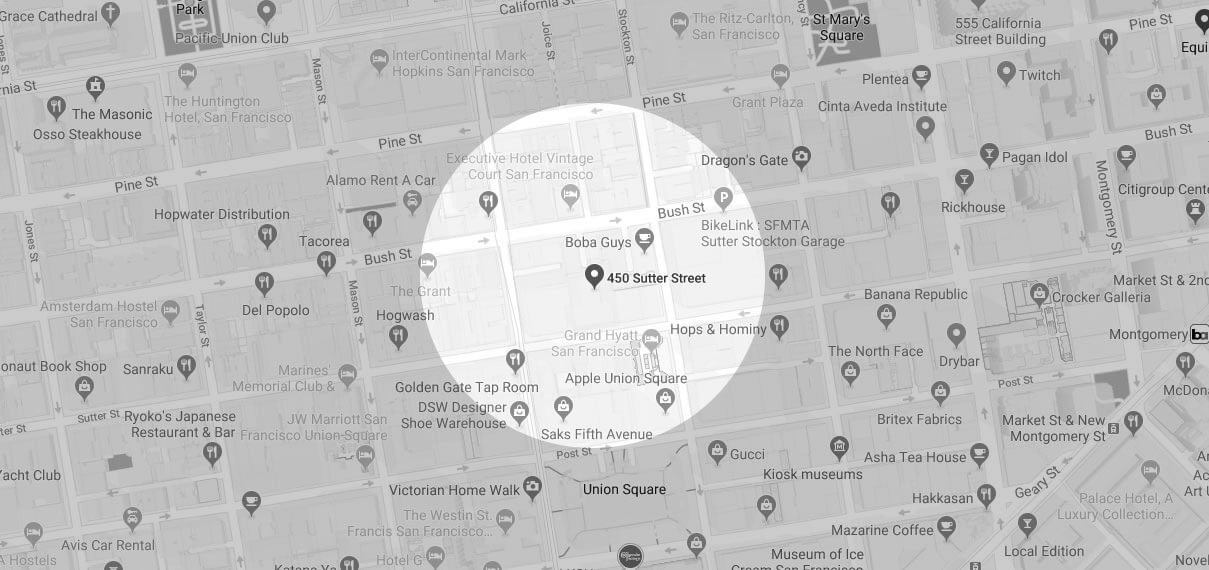Invisalign® Process
Nowadays, not only do adults want a positive self-image in their professional and personal lives, but also children want the same. When maloccluded patients think about teeth correction, the first thing that comes to their mind is wired braces. However, with the changing demands and needs of patients, dentistry has been revolutionized. The primary concern among both dentists and patients has improved aesthetics. Researchers have developed an array of solutions to tackle the insisting demand for an alternative to conventional wired braces — Invisalign is on top of them. Invisalign are thin, transparent, removable, and unobserved aligner trays for the successful moving of teeth to a desired new position.
What Does Invisalign Work?
Invisalign can address many issues treated by traditional wired braces. If worn according to the dentist's guidelines, Invisalign aligners can do wonders. Invisalign comes with SmartForce technology that allows customization according to unique individual needs. Invisalign clear aligner trays are made of thin and durable BPA-free plastic molded to fit over your teeth exactly. Unlike metal braces, Invisalign aligners apply gradual and consistent force as a whole to your teeth instead of applying force on individual teeth. Patients are instructed to wear their aligner trays for a minimum of 22 hours daily. However, you must take them off before eating and drinking. Every two weeks, you will swap your old aligner trays with the new ones to move teeth to the desired position. The new trays are slightly different from the old ones.
Nowadays, people are less inclined toward metal braces due to their unsightly appearance and lack of comfort. Metal braces need a dentist's visit every six weeks. In comparison, Invisalign aligners are a comfortable and virtually painless option. You need to change your aligners every two weeks, instead of bearing tightening pain every six weeks. In addition, metal braces constantly rub against your cheeks, causing soreness and cuts. Whereas, with Invisalign, most people, even you yourself, cannot tell if you are wearing something inside the mouth. This thing makes the treatment very inviting to teens and older people alike.
What Are The Steps of Invisalign
Invisalign aligners are gaining massive popularity for their dental and aesthetic values. They are a ground-breaking alternative to conventional fixed orthodontic appliances. They work on the same principle as metal braces, but their framework and aesthetic benefits are way beyond metal braces. Their vast difference in design from metal braces but the same results is a bit of a mystery and urges people to think about how the Invisalign treatment process works.
Consultation with your orthodontist online or in person
Invisalign aligners is gaining massive popularity for their dental and aesthetic values. They are a ground-breaking alternative to conventional fixed orthodontic appliances. They work on the same principle as metal braces, but their framework and aesthetic benefits are way beyond metal braces. Their vast difference in design from metal braces is a bit of a mystery and urges people to think about how the Invisalign treatment process works.
Our team at My Dentist San Francisco has compiled a list of steps involved in the Invisalign process. Let's take a look!
Develop treatment plan
Invisalign is a versatile treatment system. Still, it doesn't work for everyone. The first thing is to know about your candidacy for the procedure by consulting an orthodontist. In the consultation meeting, you can voice your concerns and desired outcomes and discuss your options, treatment plan, and timeline.
A treatment plan is based on X-rays, 3D scans, and images of your oral cavity. The results are sent to the Invisalign lab to manufacture your bespoke aligner trays. Your orthodontist will design the end result based on biology and mechanics of the mouth and invisalign will break down the proposed treatment in several trays.
Wear your aligners
Once your aligners are ready, you will be called to the dentist's office. Not only would your dentist hand you over your new set of aligners, but they would also instruct you about the order of wearing them because all the trays are different and must be worn in a specific order. Each new aligner repositions your teeth and should be worn for two weeks. If your treatment doesn't progress, your new successive aligners won't fit over your teeth.
Maintain your Smile and Enjoy!
It is a physical phenomenon that, after releasing a strong force, things tend to return to their original position, as is the case with aligner trays. Once the treatment is complete, when you remove the Invisalign aligners, there is a potential risk of teeth slightly returning to their original state. To rule out this risk, you would be required to wear retainers. Retainers help retain your new smile. You are not required to change retainers bi-weekly. Instead, you need to wear a retainer for the first 3 months to stabilize the teeth in their new position and then at night for the rest of your life. Enjoy your hard-earned smile!
Risks and Concerns of Invisalign Process
Although the number of successful treatments of complex cases by Invisalign is increasing, a few risk factors and concerns are still associated.
Although the number of successful treatments of complex cases by Invisalign is increasing, a few risk factors and concerns are still associated.
Concerns
- Correction of severe tooth inclinations, rotations, and significantly large gaps lies beyond the scope of Invisalign technology.
- Invisalign aligners are predisposed to discoloration when they come in contact with liquids.
- Acidic drinks, flavored waters, drinks, juices, soda, or sugary foods penetrate through the aligners, stay on their surface for a long time, and cause discoloration in both teeth and the aligners.
- Since the aligner trays are removable, people remove them often, even more than the standard requirement. It extends the treatment time and also poses a threat to successful alignment.
- Placing aligners in unhygienic conditions and dirty surfaces post-removal causes an unhygienic environment.
- To reap successful results, patient compliance is required. Patients must wear Invisalign for at least 22 hours a day and seven days a week.
- You can expect a clear aligner system to cost you far more than fixed dental appliances. It means a standard aligning costs you manifold with Invisalign.
Risk factors
Several studies have been conducted to determine these aligners' potential risks for oral health. The results of the research were analyzed, and a few serious risks were revealed. Some of them are discussed below:
- Clear aligners may obstruct normal breathing. You may feel suffocated or breathless after wearing them. Although it’s rare.
- After wearing your aligners, you might feel a sore throat. A sore throat hinders swallowing. It, in turn, gives rise to more health complications. This is very rare.
- Tooth aligners might give rise to itchiness and breakouts due to irritation of oral mucosa.
- In very rare cases, due to the body's natural response, the human body treats aligners as foreign objects and rejects them. It leads to anaphylaxis — a severe hypersensitivity reaction.
- Due to the pressure buildup by Invisalign trays, lips might swell. This is also very rare.
- Infrequent cases of restricted air passage, chest pain, and cough are also reported, rarely.
- Sometimes aligners may cause headaches, painful ingestion of food, dryness of mouth, or nausea.
- In rare cases, a few patients report fatigue, soreness, and swelling of the eyes.
- Aligners put excessive pressure on teeth, thus resulting in gum discomforts like swelling or bleeding.
- If you ever had a mouth injury in the past but are fit for Invisalign treatment, your nerves are at risk of damage. You must return to restorative treatment first before getting Invisalign treatment. That is the reason we need a full set of x-rays and dental records before starting the treatment.
- Tenderness and discomfort are common complaints by first-time wearers of Invisalign.
What to Expect Before and After The Procedure
Invisalign delivers a straight smile without causing pain and discomfort. Also, unlike traditional metal braces, it carries fewer potential risks and offers virtually the same results. Aesthetic benefits are the most attractive feature of the treatment. If the aesthetic benefits of the treatment also move you, read on to know what you can expect before and after the Invisalign procedure process.
Before Invisalign Procedure Process
To start, schedule a consultation meeting with your dentist to know if you are a suitable candidate for Invisalign. Your orthodontist will create a 3D image of your smile to know if Invisalign works for you. Once the treatment goals are agreed upon and your candidacy is established, your orthodontist will draft a customized treatment plan with timelines. They will tell you how much your teeth will reposition with each new set of aligners.
After Invisalign Procedure Process
Once the treatment is completed, your doctor will hand you a retainer to wear. Retainers protect the smile you achieve after the long-haul Invisalign process and prevent your teeth from drifting back to their original position. Initially, you need to wear a retainer for a few hours daily. Later you need to wear them while sleeping only. Not wearing a retainer might ruin your smile. So, protect your hard-earned smile.
Additional Information About Invisalign Process
The longevity and productivity of any medical process demand the patient's compliance with the post-procedural guidelines. Especially, Invisalign is a procedure in which success relies mainly on patient adherence. There are many ways you can enjoy your brand-new smile for many years to come:
- Wear your aligners for at least 22 hours a day. Infrequent wearing may delay the treatment.
- Use a soft-bristled brush and soap to clean your aligners as you clean your teeth. Using toothpaste may cause abrasion in your aligner. Cleaning helps prevent tartar buildup and plaque.
- Remove your aligners and brush and floss your teeth. Maintaining good oral hygiene is essential to avoid complications.
- Quit smoking. Smoking causes staining of teeth and gum diseases. Additionally, it is detrimental to health. Smoking with aligners ruins the success of your procedure.
- Generally, you can drink water with your aligners on. But avoid drinking hot water while wearing aligners. It can alter the shape of your plastic aligners.
- Visit your dentist according to the schedule. Attending follow-up meetings helps your dentist monitor your progress and determine if the progress is going as planned.
Conclusion
Invisalign is a more comfortable and less visible treatment option, ideal for those conscious of their smile. It is a friendly alternative to traditional metal wires and brackets used to correct teeth misalignments. It subtly fits your lifestyle choices without making you compromise your hobbies or favorite foods. However, it is not suitable for everyone. One must consider a few potential risks and side effects before starting the treatment. A consult visit to the dentist plays a pivotal role in executing a successful treatment plan.
Recently, a plethora of 3D digital technology has inundated the dental market. Taking dental impressions and 3D printing has become commonplace, making the Invisalign process easier and better. The entire Invisalign process employs the most sophisticated and advanced technology to revitalize smiles. Still, the success rate lies heavily on the patient's side. Compliance with the orthodontist's instructions and maintaining discipline with the treatment are the most important criteria for achieving desired results.
About My Dentist San Francisco
My Dentist San Francisco is a leading dental clinic in San Francisco, CA, United States. We offer a wide range of dentistry services from preventive care to advanced restorative treatment and cosmetic smile makeovers. We assure to provide a comfortable environment to those who may feel nervous about the idea of receiving dental services. We prioritize providing the highest standards of evidence-based dental care.
Getting orthodontic treatment is nerve-racking. We, at My Dentist San Francisco, are committed to making the process as smooth as possible for our patients. If you think Invisalign is right for you, get in touch with our expert orthodontists to ensure you get the best treatment and the most beautiful smile.




